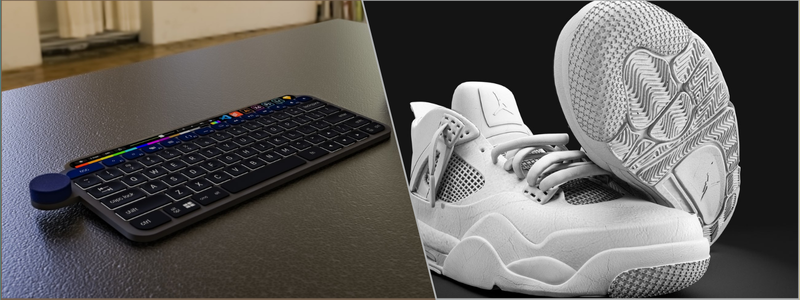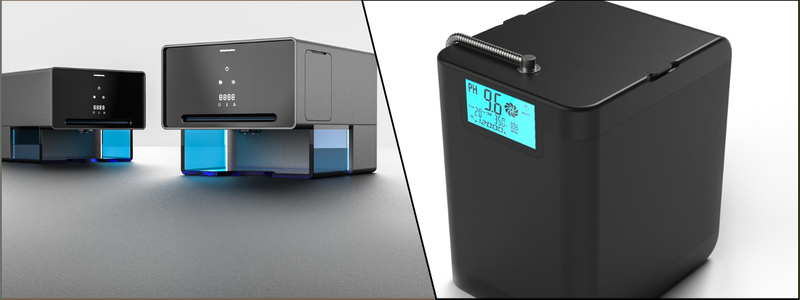It is crucial to bring life into products by enchanting images in the present era of competition, and the efficient rendering and modeling in 3D is the answer to delivering it. Along with the modeling of consumer items, building constructs, or high-precision industrial components, 3D rendering service providers are helping companies translate ideas into concrete images.
The CAD experts are essential in finishing designs, making them easy to use, and acquiring exact deployment. Platforms like Cad Crowd link companies with top freelance designers at a cost that is affordable but sufficient to meet project requirements.
 Table of contents
Table of contents

RELATED: How 3D modeling is revolutionizing the healthcare industry for companies and medical experts
The revolution in product visualization
Previously, product design was carried out using 2D sketching and physical mock-ups. They took a lot of time, were very costly, and not that accurate. Welcome to 3D modeling and rendering, the technology that transformed product visualization across industries globally overnight.
Today, 3D rendering service providers provide businesses with hyper-realistic product images even before they become a reality in the physical world. This has improved everything from marketing planning to the manufacturing process and added innovation at an unprecedented scale for product design companies.
The power of 3D modeling: far beyond simple prototypes
Most businesses still think of 3D modeling as a virtual way of creating prototypes—something to see before something is built. Sure, that’s right. However, 3D modeling today has evolved far beyond a simple digital copy. It has become a core tool that serves everything from product design to marketing, with accuracy and flexibility that the old methods of prototyping could only dream of offering.
Photorealistic accuracy: concepts made real
Those are not the days anymore when computer simulations looked two-dimensional and artificial. With advanced rendering technology, 3D models can now sport real lighting, shadows, and reflections and thus come very close to resembling real-world images. This means that businesses can show high-quality images of products even before production, which can be leveraged in order to entice customers and investors through captivating visual realism.
An iterative design process: faster, smoother flow development
Perhaps 3D modeling design services‘ greatest advantage is how it makes it so simple to streamline the design process. Instead of having to wait for prototypes to be created, designers can change on the fly and try on different versions on the fly. By constantly refining it in this manner, costs are reduced, and time is saved, allowing companies to have their product perfected before putting it into production.
Material and texture simulation: the realistic experience
Another product design challenge is selecting perfect materials. With 3D modeling, designers can mimic a wide range of materials—such as glass, wood, metal, and fabrics—through complex shaders and render engines. This allows teams to replicate the way a finished product will appear and be perceived and decide on texture, color, and finish before reaching the stage of actually creating anything physical.
Smooth integration with AR/VR: an interaction paradigm of the future
3D models are not the domain of static images anymore—now, they play a crucial role in immersive technologies like virtual reality (VR) and augmented reality (AR). Businesses utilize these technologies to design interactive experiences by means of which customers engage with a product before consuming it. A virtual store or a preview in an augmented reality manner, 3D modeling envisions customer interaction in the context of a genuine feel experience of dealing with products.
The future of 3D modeling in business
Using the power of 3D modeling, businesses can visualize, optimize, and market products like never before. With capabilities such as photorealistic image generation, real-time design simulation, material simulation, and AR/VR integration, 3D modeling is a must-have for contemporary businesses. No longer is it about prototyping—it’s about changing the way products are created and sold.

RELATED: The future of electronic design engineering: innovations and trends for CAD services companies
How 3D rendering service companies revolutionize product development
It is beyond the capability of every company to generate good 3D models in-house, and that’s when specialized rendering service companies come in. Such businesses provide expertise, software, and process streamlining that enhance product development and the richness of visual storytelling. That is how they transform your products for your consumer product design company:
Simplifying the conceptualization process
The product ideation process of developing a product is normally plagued with cross-communication problems among stakeholders, designers, and engineers. Hand drawings and rough prototypes occasionally fail to obtain the sensitive design details accurately. 3D rendering solves the problem by providing:
- High-level detailed concept models – Initial sketches get brought to life as digital, exposing form, proportion, and beauty.
- Communication with stakeholders – Realistic 3D renders enable non-technical team members to comprehend and provide input constructively.
- On-the-spot adjustments to design features – Rather than being forced to restart an entire mock-up, minimal adjustments can be done on the computer in hours.
Marketing and pre-sales campaigns
What may be the most surprising impact that 3D modeling has is how it allows for boosting marketing and pre-sales campaigns far ahead of production itself. With pictures so hyper-realistic, companies can:
- Create stunning product photos for marketing – Photorealistic product images can be used for brochures, websites, and social media marketing without the expense of product photoshoots.
- Enable interactive product experiences – Customers can turn, zoom, and customize products online with 3D configurators, boosting interaction and trust in purchasing.
- Generate pre-sales revenue – Sell before production even beginning with showing realistic product images in crowdfunding campaigns, investor decks, and webshops.
Minimizing production mistakes and costs
One of the largest production horrors is that mistakes are expensive. A tiny design mistake can create wasted material, delayed production, and added cost. 3D modeling experts avoid this by:
- Detection of design defects before production – Engineers can virtually test tolerances, fit, and function, so the design is flawless before production.
- Optimization of material usage – Material waste and unnecessary costs can be simulated with virtual prototyping, minimizing costs.
- Time-to-market acceleration – Since issues get resolved virtually, businesses can go from design to production much more rapidly than ever before.
Mass customization and personalization
Consumers today desire customized products that fulfill their individual requirements. It was time and money-intensive earlier, but with 3D modeling, there is no lag now. Companies can now:
- Offer customizable product options – Individuals can see a range of colors, materials, and designs in real-time using online 3D rendering software.
- Enable mass customization – Parametric modeling allows companies to manufacture customized variations at low cost without the cost of production.
- Enhance customer satisfaction – Companies minimize returns and dissatisfaction by enabling customers to see and approve their customized designs before production.
Industries that get the most benefits from 3D rendering services
While nearly every business can benefit from 3D modeling and rendering, a few have seen tremendous increases in efficiency and marketplace performance.
- Furniture & interior design services – Companies can show whole collections of furniture with realistic textures so clients can visualize pieces in their living rooms.
- Automotive – Automakers and aftermarket part designers use 3D rendering for prototypes, advertising photos, and performance simulation.
- Fashion & jewelry – Luxury fashion brands utilize photorealistic 3D visualization to show detailed designs before manufacturing, conserving precious materials.
- Real Estate & architecture – Investors and potential buyers are able to view buildings virtually before they are built thanks to 3D visualization.
- Consumer electronics – Technology firms utilize 3D visualization to show product features in marketing brochures as well as in investor presentations.
Choosing an appropriate 3D rendering service company
If you’re looking to integrate 3D rendering into your product development workflow, selecting the right service provider is crucial. Consider these key factors:
- Expertise and portfolio – Review past projects to gauge their quality and alignment with your needs.
- Software capabilities – Make sure that they employ industry-grade software like Blender, 3ds Max, V-Ray, or Unreal Engine to yield the highest-grade output.
- Scalability and flexibility – A good rendering firm should be capable of managing projects of various sizes and complexity.
- Turnaround time and communication – Smooth communication and open lines of communication help keep your project on track.
- Client reviews and testimonials – Find out what previous clients have to say about their reliability and quality of service.
The future of 3D rendering in product development
With the progress in AI rendering, real-time 3D visualization, and cloud computing, the future of 3D modeling now appears even brighter. Some of the future trends are:
- AI-aided 3D modeling – Design automation will be simpler, with artificial intelligence, and faster and more precise rendering than ever.
- Real-time ray tracing services – Enhanced simulation of lighting with realistic simulation will produce photorealistic images in seconds, enhancing design work processes and marketing graphics as well.
- 3D printing integration – Direct conversion of 3D models into printable 3D structures will continue to shorten the prototype-to-product time frame.
- Virtual & metaverse showrooms – Companies will employ immersive 3D worlds for virtual product showrooms through which customers can see and experience products in the same way they would in physical life.

Last thoughts: a revolution in product development
3D modeling and rendering have long since moved beyond the presentation and advertising of products. From saving costs and improving the precision of the design to rewriting the customer experience for eternity, there is no question about the influence of these technologies. By becoming a cooperative effort with an experienced 3D rendering firm, businesses gain a marketing edge in the competitive market.
Whether you’re designing furniture, launching a new tech gadget, or showcasing a property development, leveraging 3D modeling will elevate your product’s visual appeal and functionality. It’s time to embrace the future—one hyper-realistic render at a time.
Cad Crowd is here to help
3D modeling your designs is not only visualization but also idea development, functional improvement, and effective presentation to clients and investors. With professional 3D rendering services, companies can visualize products in remarkable detail and accuracy, which enables them to make the right production decisions. For anyone who wants to use high-quality 3D modeling, hiring experienced freelancers is a game-changer.
Cad Crowd brings businesses together with the best freelance CAD designers that excel at offering accurate, photorealistic drawings designed to your specifications. For product prototyping and marketing shots or technical design assistance, you have the perfect specialist to make your dream come true. Receive a free quote today and keep pushing your product dream to new heights.
The post How 3D Modeling Transforms Your Products with 3D Rendering Service Firms first appeared on Cad Crowd.